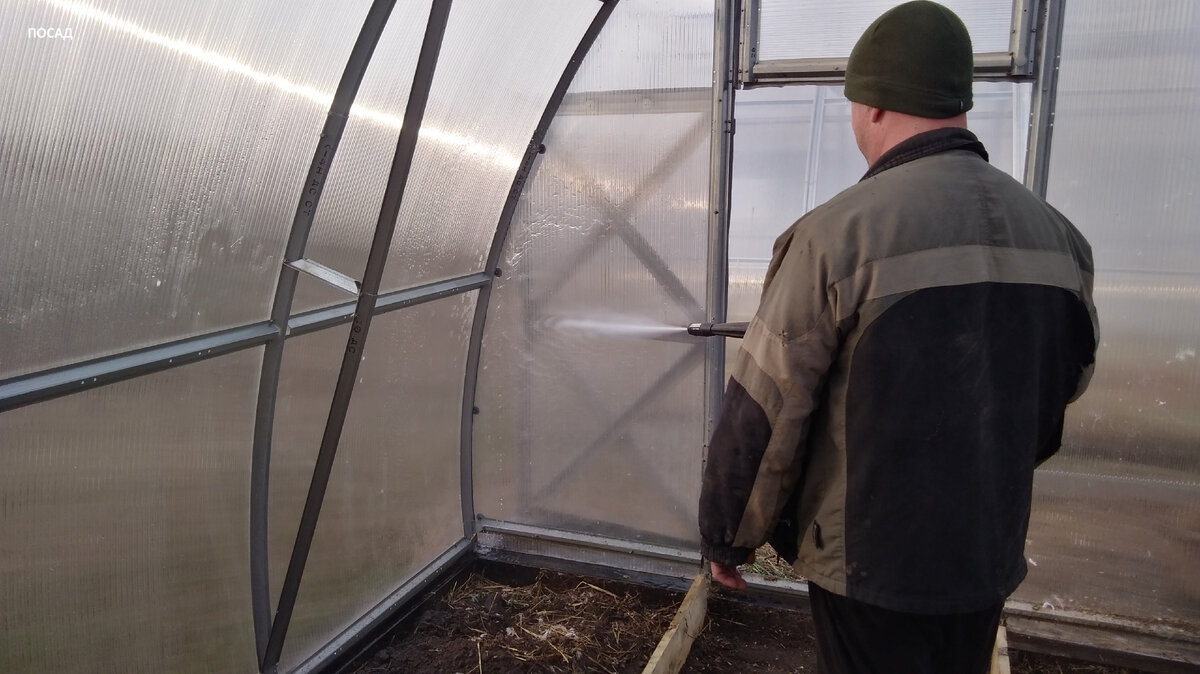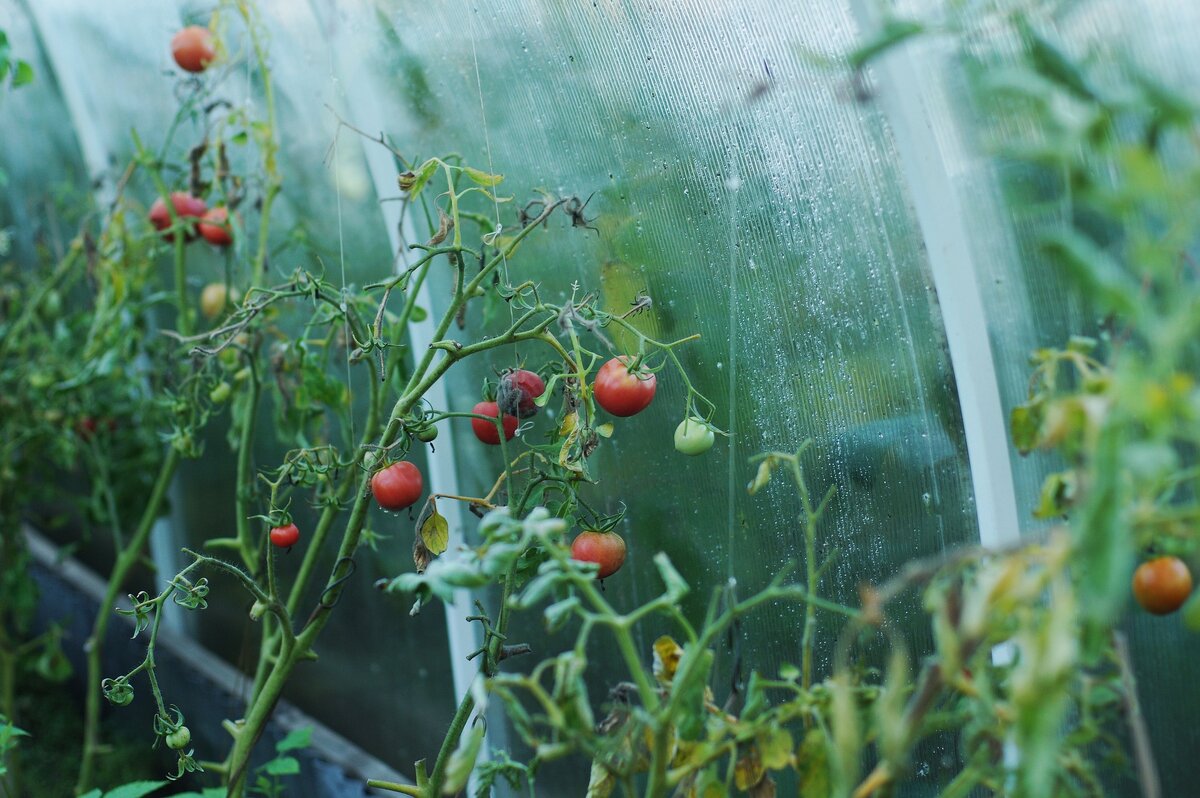Why does a greenhouse sweat? Causes of condensation and methods of control

Greenhouse owners often face the problem of fogging of the walls and ceiling. This phenomenon is not just a temporary inconvenience, but a serious problem that can lead to the development of mold, fungal diseases of plants and deterioration of their growth. Why does condensation form in the greenhouse? How to prevent excessive fogging and create a healthy microclimate? Let's look into this problem and consider effective methods of combating it.
The main reasons for greenhouse fogging
Condensate in greenhouse is caused by the temperature difference between the indoor and outdoor air. When the warm, moist air inside the greenhouse comes into contact with the cold surfaces of the walls and roof, moisture settles in the form of droplets. But why does this happen and what exactly enhances the fogging effect?
High humidity
- Insufficient ventilation. If the greenhouse does not have an effective ventilation system, moist air accumulates without finding a way out. The more moisture in the air, the more fogging.
- Frequent and abundant watering. Water, evaporating from the soil and plant leaves, saturates the air with moisture. In this case, evening watering is especially harmful - plants do not have time to absorb moisture, and it remains in the air.
- Soil evaporation. If the soil in the greenhouse is poorly drained or constantly over-watered, moisture evaporates, which increases condensation.
What to do? Monitor the humidity level with a hygrometer and try to maintain it within 60-70%.
Sudden changes in temperature
- Overheating during the day and cooling at night. In sunny weather, the greenhouse heats up quickly, and at night the temperature drops sharply. This leads to the formation of dew on the walls and roof.
- Poor thermal insulation of walls and roof. If the greenhouse is made of low-quality polycarbonate or thin glass, heat quickly escapes to the outside, cooling the internal surfaces.
What to do? Use thermal insulation materials, such as a double layer polycarbonate or heat-insulating films.
Insufficient ventilation
- The vents are not positioned correctly. If there are not enough ventilation holes or they are positioned incorrectly (for example, only at the bottom), moist air accumulates in the upper part of the greenhouse.
- The greenhouse is installed in the wrong place. If the structure is located in a low area, cold air accumulates inside, causing condensation.
What to do? Ensure uniform air circulation using natural and forced ventilation.
The dangers of condensation for plants
What is the danger of condensation if the problem is left unattended?
- Development of fungal infections. High humidity promotes the appearance of gray mold, powdery mildew, and late blight.
- Pollen sticking. For tomatoes, peppers and cucumbers, wet pollen loses its ability to pollinate, reducing yields.
- Lowering the temperature of plants. Moisture on the leaves evaporates, cooling the plant, which leads to slower growth and decreased immunity.
What to do? Regularly remove excess moisture and monitor the microclimate in the greenhouse.
Methods to prevent greenhouse fogging

Effective ventilation
- Roof and wall vents. For natural air movement, install vents at different levels.
- Automatic ventilators. These devices open the vents when the temperature rises and close them when it cools down.
- Forced ventilation. In large greenhouses, fans or exhaust systems are installed for uniform air exchange.
Humidity control
- Water only in the morning. The afternoon sun will allow excess moisture to evaporate.
- Mulching the soil. Sawdust, straw or agrofibre reduce moisture evaporation from the soil.
- Using drip irrigation. Water goes directly to the roots, without creating excess humidity in the air.
Improving thermal insulation
- Polycarbonate with anti-condensation coating. It distributes moisture evenly, preventing drops from dripping onto plants.
- Double glazing. Reduces temperature differences, preventing condensation.
- Geotextile in the soil. Helps maintain a stable soil temperature and reduces moisture evaporation.
Choosing the Right Greenhouse to Minimize Misting
Which greenhouses are best at dealing with condensation?
- Greenhouses with a gable roof. They provide better warm air removal through ridge ventilation.
- Models with automatic ventilators. Allow you to maintain optimal temperature and humidity without constant monitoring.
- Frame greenhouses with anti-condensation coating. Reduces the formation of drops on internal surfaces.
If you need a greenhouse that minimizes fogging, greenhouses from NovaTeplitsa are the perfect choice. They are equipped with ventilation, high-quality coating and are resistant to temperature changes. Check out the models on our website and create ideal conditions for your plants!
Causes of condensation in a greenhouse and methods of control

Greenhouse fogging is a serious problem that can lead to plant diseases and reduced yields. The main causes are high humidity, insufficient ventilation and sudden temperature changes.
How to combat fogging?
- Install vents, automatic ventilators or fans.
- Use polycarbonate with anti-condensation coating.
- Water the plants in the morning and use drip irrigation.
- Improve thermal insulation and drainage.
Want to avoid problems with condensation? Choose greenhouses from NovaTeplitsa – they create optimal conditions for plant growth and prevent excessive fogging. Check out the models on our website and make the right choice today!





